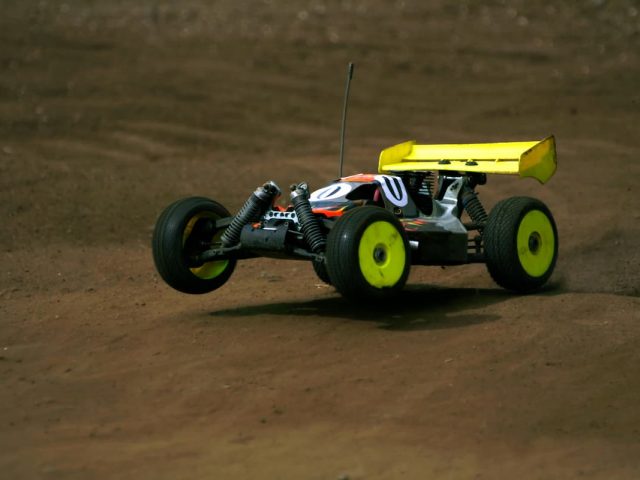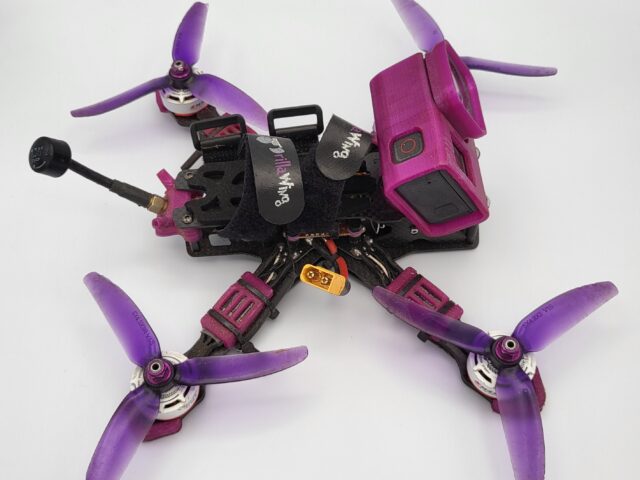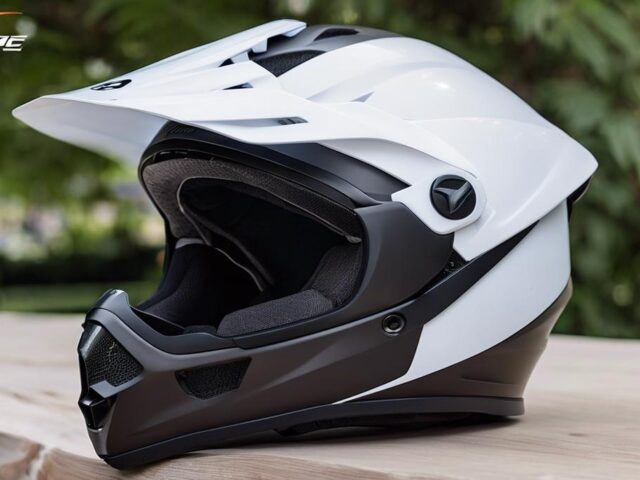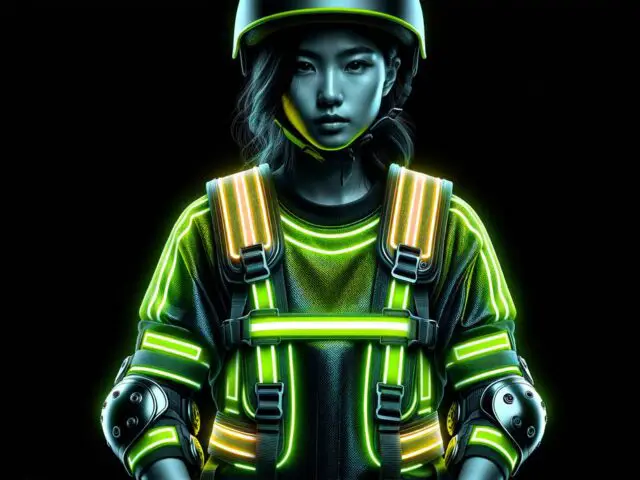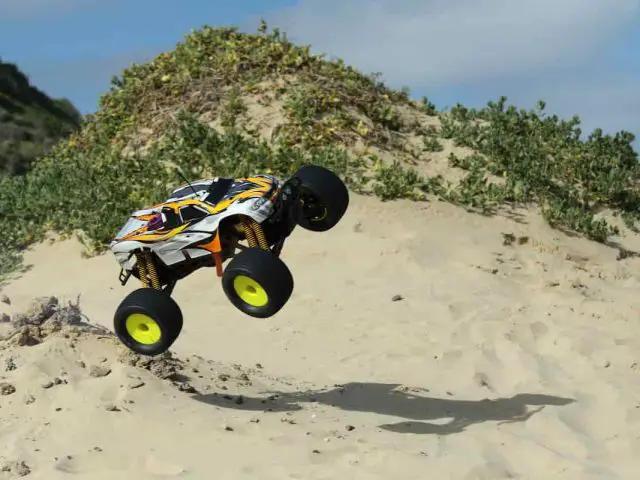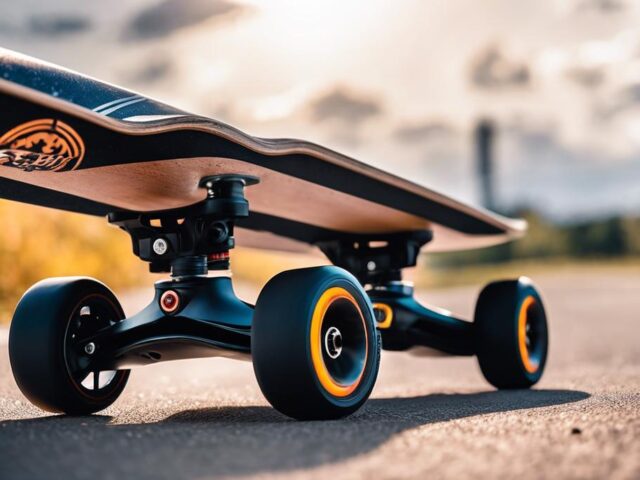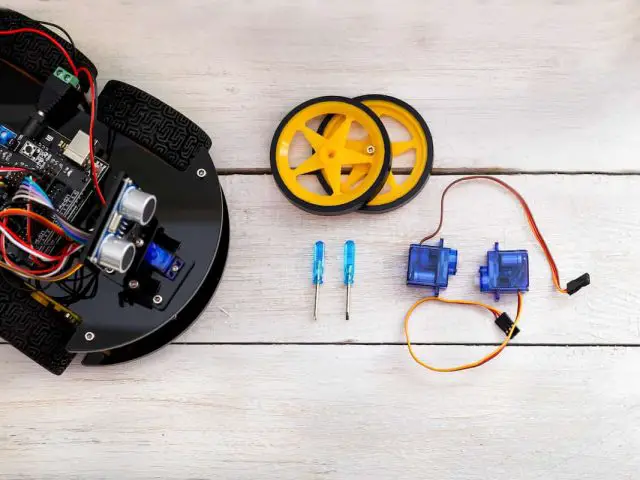Exhilaration matched with innovation; the realm of electric skateboards is ever-evolving, captivates enthusiasts, casual riders and tech enthusiasts alike. Offering an eco-friendly alternative to urban commuting, these sleek machines are more than just a ‘fun ride’; they are a testament to the marriage of design, technology and functionality. This comprehensive discussion gives an intriguing look into what makes an electric skateboard tick, the journey from their humble beginnings to the cutting-edge machines they have become, the distinguishing features that set the best electric skateboards apart, and what the future looks like for this inspiring amalgamation of technology and mobility. Whether you’re a seasoned rider seeking advanced knowledge, a potential user planning to buy, or just intrigued by this fascinating technology, there’s something here for everyone.
Table of Contents
Understanding Electric Skateboards
Revolutionizing Travel: The Nuts and Bolts of the Best Electric Skateboards
Deep-diving into the heart of modern tech has never been more exhilarating than the realm of electric skateboards. This fresh fusion of fun and function is redefining frustration-free transport, and for good reason.
Predominantly designed for short travel distances, the best electric skateboards are self-propelled boards that deliver an invigorating twist to the world of personal transportation. Driven not by a kick-push mechanism but a foot-activated electric motor, they deliver a harmonious blend of effortless cruising and noticeable speed, making short commutes and urban exploration a sheer thrill.
Underneath the exterior, electric skateboards function via a perfectly orchestrated symphony of technology. To begin with, the skateboard is propelled by a motor, generally present on the back wheels. This bit of technology is controlled by an electronic speed controller (ESC), which cleverly balances and regulates power distribution.
The power for these marvels of tech is sourced from a rechargeable battery, elegantly tucked away beneath the deck. It’s worth noting that the range of the skateboard significantly depends on the battery capacity, so for those with a penchant for lengthy escapades, a beefier battery might be the ticket to longer, uninterrupted exploration.
Among the unique features of electric skateboards is the handheld, wireless remote control. While traditional skateboards require physical body movements for propulsion and navigation, electric skateboards distill these into a handy remote. This useful little gadget controls speed and braking via an effortless thumb movement, promoting ease-of-use and rider safety.
The best electric skateboards are not just about the gadgetry. The deck, or the board’s body, adds its own flair to the mix. Many are constructed of flexible materials like bamboo, aiding in shock absorption for smoother rides, while others opt for stiffer material like maple for enhanced stability at high speeds.
Lastly and crucially, the wheels on an electric skateboard dramatically differ from their traditional counterparts. They are designed wider and softer to provide a comfortable ride, even on rough surfaces. As a direct result, riders can enjoy a comfortable, stress-free ride on different terrains.
The future of reliable, quick, and eco-friendly urban transport is here. The electric skateboard signifies a profoundly dynamic shift in personal travel, underlined by the continual surge in its popularity.

The Evolution and Future of Electric Skateboards: Design, Technology, and Performance
Electric skateboards, once a novelty toy for tech enthusiasts and hobbyists, have morphed into an advanced personal transportation tool. Just like smartphones, drones, and other tech gadgets, electric skateboards have dramatically evolved, fueled by consistent advancements in technology.
One significant evolution point lies within the realm of weight and portability. Lightweight skateboards are not just powerful but are also easy to carry around. Slimming down the board’s weight provides flexibility and convenience, leading to a better user experience.
A unique design aspect of some of the best electric skateboards is swappable components. It allows users to customize their board to meet personal preferences and styles. Depending on the type of commute, riders can switch between large wheels for off-road use and small wheels for city terrains. Additionally, you can modify the deck and batteries based on your riding conditions and travel distance.
In terms of technology, the development of highly efficient brushless motors has considerably impacted the electric skateboard performance and ride quality. With high energy conversion rates and fewer mechanical parts, these motors offer better energy efficiency, increased longevity, and less likelihood of overheating than their brushed counterparts.
Alongside motors, speed controllers have seen substantial developments. The evolution from analog to digital controllers has granted these boards more precise, real-time acceleration and braking control. Notably, these digital electronic speed controllers (ESCs) have evolved into microprocessor-based controllers. They offer greater precision, programable riding modes (like beginner or advanced), and enhanced safety mechanisms.
Battery technology hasn’t been left behind either. Advancements in lithium-ion and lithium-polymer technologies have resulted in batteries that are lighter, more energy-dense, and faster to charge. Some even offer regenerative braking, which harvests energy during deceleration and delivers it back to the battery, thereby extending the skateboard’s range without the need for additional charging.
Even the user interface has witnessed a tech-induced upgrade. Touchscreens and smartphone integration through apps now offer riders the ability to control their skateboard’s speed, monitor battery life, and even track their rides. Moreover, with the integration of AI and GPS tech, electric skateboards are veering towards autonomy, boasting tracking, collision-avoidance, and self-routing capabilities.
While some of the best electric skateboards are lighter, faster, and smarter than their initial counterparts, future versions promise even more fascinating innovations. With continued advancements in AI, battery tech, and materials science, we may soon see self-charging solar boards or AI-assisted collision avoidance, transforming the way we navigate our cities.
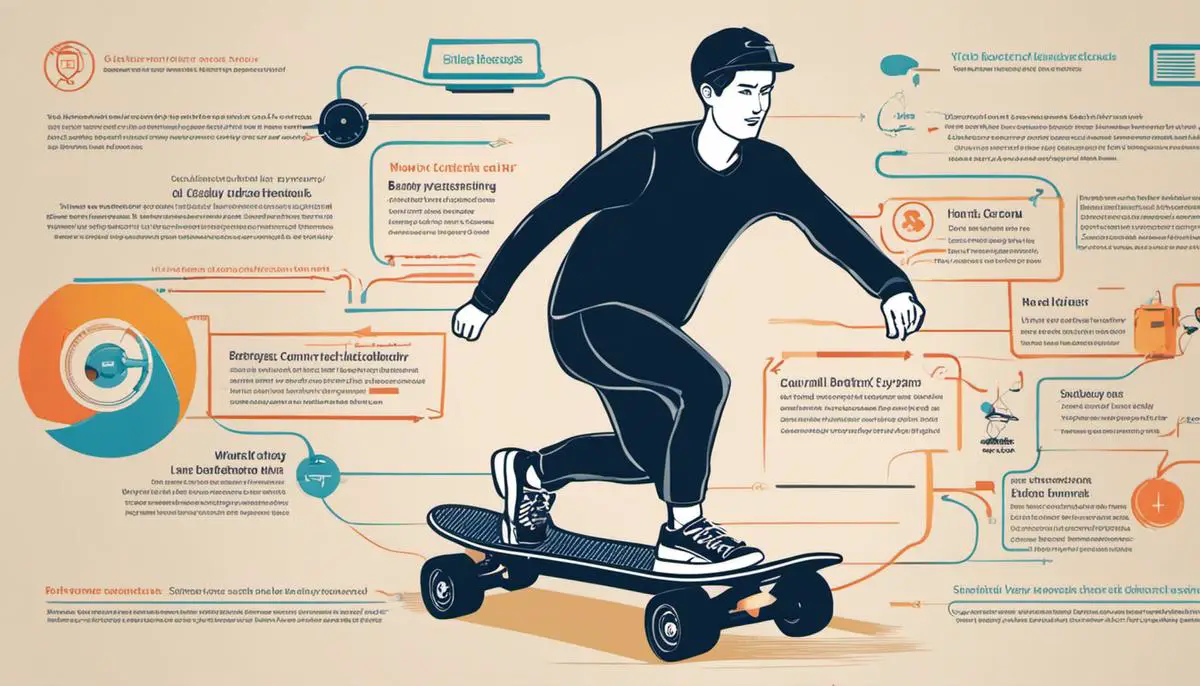
Photo by harleydavidson on Unsplash
Key Features of the Best Electric Skateboards
The best electric skateboards on today’s market showcase an array of distinguished features such as weight and portability enhancements, swappable components, and razor-sharp tech advancements.
Performance-level e-boards have optimally balanced weight and portability, often featuring lightweight yet robust materials. Achieving a balance between durability and being lightweight has resulted in models that drastically ease the burden of transportation.
A closer look at the market shows manufacturers heading towards customization. Brands are now offering swappable components – be it decks, wheels, or even motors – allowing users to modify and optimize the ride characteristics according to their personal preferences. Innovation does not stop at giving the option of customizing the board’s components, but it presents an assortment of aesthetic variants as well.
Brushless motors easily rise to the surface as the motors of choice for the best electric skateboards. Superior, quieter, and more reliable than older brushed variants, brushless motors have significantly elevated the performance and ride quality of electric skateboards, offering smoother and more powerful acceleration and deceleration, improving battery life and reducing mechanical wear.
Acceleration and braking have progressed a great deal as well. Modern electric speed controllers offer riders an unprecedented level of control on their boards. They make responding to changing road conditions and challenges a breeze, optimizing your overall riding experience.
Much of the credit for the modern skateboard’s light weight and extended range must go to advancements in battery technology. The drive towards lighter, faster-charging, and more efficient batteries has revolutionized the realm of electric skateboards. The best electric skateboards now boast quick charge times and impressive ranges, pushing the boundaries of what’s possible.
Recent years have also witnessed the integration of touchscreens and smartphone apps into the e-skateboarding experience. The power to control and monitor your ride right in the palm of your hand by displaying real-time data including speed, battery status, ride-mode, range estimation, and more; riders now have an unprecedented level of control and information at their fingertips.
For the future to be able to create the best electric skateboards, more advancements in hardware and software will be made. Words like autonomy and AI-assisted features are starting to stir up conversations among tech enthusiasts. While it’s still early days, the prospect of a board smart enough to learn your riding habits, adapt to your skill level, or even power itself sounds more reality than fiction.

Review of the Best Electric Skateboards
Breaking down the world of the best electric skateboards to its most superior products, some standouts rise to the top based on features, reliability and user reviews. Brands like Boosted, Evolve, Meepo, and Inboard are just a few names that are synonymous with the best electric skateboards experience, each leveraging technology and innovation to deliver exceptional performance and user experience.
Evolve Boards
On the other hand, Evolve, with its GT series, offers exceptional terrains versatility. Be it the serenity of the beach boardwalks or the challenges of rocky trails, with Evolve’s GT dual-motor setup and the unique option to switch between all-terrain wheels and street wheels, the world is essentially a skate park.
Key Features and Specifications of the Evolve GT:
- All-Terrain and Street Versions: The Evolve GT was available in both all-terrain and street versions, allowing riders to choose the model that best suited their riding preferences and terrain. The all-terrain version featured off-road tires for rougher surfaces, while the street version had traditional skate wheels for smooth pavement.
- Top Speed: Depending on the specific model and configuration, the Evolve GT offered impressive top speeds, with some variations capable of reaching speeds of up to 26 mph (42 km/h) to 26.7 mph (43 km/h).
- Range: The board featured different battery options, resulting in varying ranges. The range could vary from approximately 12 miles (19 kilometers) to 31 miles (50 kilometers) on a single charge, depending on the battery choice and riding conditions.
- Dual Motors: The Evolve GT was equipped with dual brushless motors, which provided strong acceleration and hill-climbing capabilities. These motors were known for their power and reliability.
- Wireless Remote: Evolve provided a wireless remote control with a user-friendly interface. The remote allowed riders to control acceleration, braking, and speed modes, as well as check battery status.
- Deck: The deck of the Evolve GT was typically made from premium materials and had a concave shape for better foot placement and control. It featured a sturdy and durable design.
- Regenerative Braking: The board featured regenerative braking, which helped recharge the battery while slowing down or descending hills.
- App Connectivity: Evolve offered a mobile app that allowed riders to connect to their board via Bluetooth. The app provided features like firmware updates, ride tracking, and customization of ride settings.
- Weight and Portability: The Evolve GT, while robust and sturdy, was relatively heavy compared to smaller electric skateboards, which could affect its portability.
- Lights: The board featured integrated LED lights on the front and rear for enhanced visibility during night riding.
- Rider Weight Limit: The board typically had a recommended rider weight limit, and it could accommodate riders of varying sizes.
Here are some of the pros and cons of the Evolve GT:
Pros:
- High performance
- Long range
- Versatile
- High-quality components
- Comfortable ride
Cons:
- Expensive
- Heavy
The Evolve GT electric skateboard was designed to provide a premium riding experience for enthusiasts who wanted the option to conquer both urban streets and off-road trails. Its versatility, range options, and powerful motors made it suitable for riders with diverse needs and preferences.
Boosted Boards
Boosted remains a favorite due to its reputability and remarkable functionality. Boosted was known for its high-quality electric skateboards with exceptional performance and reliability. They offered various models, including the Boosted Mini and Boosted Stealth.
Boosted Stealth Key Features and Specifications of the Boosted Stealth:
- Top Speed: The Boosted Stealth is known for its impressive top speed. It can reach speeds of up to 24 mph (39 km/h), making it one of the faster electric skateboards available at the time.
- Range: The board is equipped with a high-capacity battery that provides a range of up to 14 miles (22.5 kilometers) on a single charge, depending on riding conditions and rider weight.
- Deck: The Boosted Stealth features a high-quality deck made from composite materials, which is designed to be both sturdy and flexible. The deck has a comfortable concave shape for stability and control.
- Dual Belt-Drive Motors: It is powered by dual belt-drive motors that deliver strong acceleration and hill-climbing capabilities. The belt-drive system is known for its reliability and efficiency.
- Regenerative Braking: The board features regenerative braking, which helps recharge the battery while slowing down or going downhill. This can extend your riding range.
- Wireless Remote: Boosted provides a wireless remote control with multiple riding modes, allowing riders to choose their preferred level of acceleration and braking. The remote also features a convenient LED screen for monitoring speed and battery life.
- Wheels: The Boosted Stealth typically comes with 85mm Boosted Lunar wheels, which provide a smooth and comfortable ride. Riders can also swap out the wheels for different riding preferences.
- Flexibility and Shock Absorption: The deck has some flex, which can help absorb shocks and vibrations from riding on rough terrain, providing a more comfortable ride.
- App Connectivity: Boosted offers a mobile app that allows riders to customize their ride settings, track ride statistics, and perform firmware updates.
- Weight Limit: The Boosted Stealth has a recommended weight limit for riders, typically around 250 pounds (113 kilograms).
- Kicktail: It features a kicktail design, allowing for easier maneuverability and tricks.
- Regularity and Reliability: Boosted Boards has a reputation for producing reliable and well-built electric skateboards, and the Stealth model is no exception.
Here are some of the pros and cons of the Boosted Stealth:
Pros:
- High performance
- Long range
- Smooth ride
- Easy to ride and control
- Relatively quiet
Cons:
- Expensive
Inboard
Another player that bags the spotlight is Inboard with its M1 model. Inboard, as a brand, stands for technology sophistication. They were the first to introduce hub motors in e-skateboards, eliminating belts and gearing associated with most e-skateboards. The M1 offers regenerative braking, a waterproof and dustproof design, and an innovative battery system that allows for swift swaps out in the field. This approach significantly reduces downtime due to charging. Isn’t that speed and convenience fused together!
Key Features and Specifications of the Inboard M1:
- Top Speed: The Inboard M1 offered a top speed of up to 22 mph (35 km/h), providing a fast and exhilarating riding experience.
- Battery: It featured a swappable battery system, allowing riders to easily replace the battery for extended riding sessions. The standard battery provided a range of up to 7 miles (11 kilometers), while the optional extended battery increased the range to approximately 14 miles (22 kilometers).
- Dual Hub Motors: The Inboard M1 was equipped with dual hub motors built directly into the rear wheels. Hub motors are known for their compact and integrated design, offering a sleek look to the board.
- Regenerative Braking: The board featured regenerative braking, which helped recharge the battery while slowing down or descending hills.
- Wireless Remote: Inboard provided a wireless remote control with a user-friendly interface. The remote allowed riders to control acceleration, braking, and speed modes, as well as check battery status.
- Deck: The Inboard M1 featured a unique deck design with an emphasis on aesthetics and ergonomics. The deck had a concave shape for better foot placement and control.
- Swappable Wheel Sleeves: Inboard introduced swappable wheel sleeves that allowed riders to change the color and style of their wheels to customize the look of the board.
- App Connectivity: Inboard had a mobile app that allowed riders to connect to their board via Bluetooth. The app offered features like firmware updates, ride tracking, and remote diagnostics.
- Weight and Portability: The Inboard M1 was relatively lightweight and had a handle built into the deck for easy carrying when not riding.
- Rider Weight Limit: The board typically had a recommended rider weight limit of around 250 pounds (113 kilograms).
- Modular Design: Inboard emphasized a modular design for ease of maintenance and replacement of components, such as the battery.
- Lights: The board featured integrated LED lights on the front and rear for enhanced visibility during night riding.
Here are some of the pros and cons of the Inboard M1:
Pros:
- Sleek design
- Powerful performance
- Innovative features
- Lightweight and portable
- Swappable battery for extended range
Cons:
- Range is not as long as some other electric skateboards
- Can be expensive
The Inboard M1 was known for its attention to design and engineering, offering a blend of performance, style, and convenience.
Meepo
Meepo gained popularity for providing affordable electric skateboards without compromising on quality and performance. The Meepo V5 was a well-received budget-friendly option. The Meepo V5 is an electric skateboard that offers a great value for money without compromising performance.
Key features and specifications of the Meepo V5:
- Top Speed: It has a top speed of 28 mph (45 km/h) and a hill climbing ability of up to 18%.
- Range: It has a range of up to 11 miles (18 km) with the standard battery and up to 20 miles (32 km) with the ER battery.
- Deck: It has a sturdy and durable deck made of 8-ply Canadian maple wood that absorbs shock and provides stability.
- Carry Handle: It has a handle design that makes it easy to carry around.
- Dual Hub Motors: It has dual 500W hub motors that deliver powerful acceleration and braking.
- Regenerative Braking: It has regenerative braking that charges the battery when you brake.
- Swappable Wheel Sleeves: It has interchangeable motor sleeves and optional 105mm donut wheels for a better riding experience.
- Regenerative Braking: The board featured regenerative braking, which helped recharge the battery while slowing down or descending hills.
Other notable features of the Meepo V5 include:
- Fifth-generation Shredder trucks: These trucks provide buttery movement and a minimum turning radius of only 2.5 meters.
- Carefully crafted protection: The V5 has bumper head protection, a waterproof enclosure, and interchangeable motor sleeves.
- Smooth braking: The new ESC with the sensitive M5S control system provides riders with a smooth braking experience.
Overall, the Meepo V5 is a great option for riders who are looking for an affordable electric skateboard with good performance and features. It is a good choice for both beginners and experienced riders alike.
Here are some of the pros and cons of the Meepo V5:
Pros:
- Affordable price
- Good performance
- Wide deck for stability
- Comfortable grip tape
- Built-in carry handle
- Fifth-generation Shredder trucks
- Carefully crafted protection
- Smooth braking
Cons:
- Not as powerful as some other electric skateboards
- Range is not as long as some other electric skateboards
- Some users have reported issues with customer service
The Meepo V5 is a beginner-friendly electric skateboard that is also suitable for experienced riders who want a fast and fun ride. You can buy it from the official Meepo website or from other online retailers.
Exway
Exway produced sleek and high-performance electric skateboards with customizable features. The Exway X1 Pro and Flex Riot were notable models.
Key Features and Specifications of the Exway X1 Pro:
- Top Speed: The Exway X1 Pro offered impressive top speeds, with variations capable of reaching speeds of up to 29 mph (46.6 km/h), providing a fast and exhilarating riding experience.
- Range: The board featured a swappable battery system, allowing riders to easily replace the battery for extended riding sessions. Depending on the battery choice, the range could vary from approximately 16 miles (26 kilometers) to 20 miles (32 kilometers).
- Dual Hub Motors: The Exway X1 Pro was equipped with dual hub motors built directly into the rear wheels. Hub motors are known for their compact and integrated design, offering a sleek look to the board.
- Regenerative Braking: The board featured regenerative braking, which helped recharge the battery while slowing down or descending hills.
- Wireless Remote: Exway provided a wireless remote control with a user-friendly interface. The remote allowed riders to control acceleration, braking, and speed modes, as well as check battery status.
- Deck: The Exway X1 Pro featured a deck made from composite materials, which offered a combination of durability and flexibility. The deck had a comfortable concave shape for better foot placement and control.
- Swappable Wheel Sleeves: Exway introduced swappable wheel sleeves that allowed riders to change the color and style of their wheels to customize the look of the board.
- App Connectivity: The Exway mobile app allowed riders to connect to their board via Bluetooth. The app offered features like firmware updates, ride tracking, and remote diagnostics.
- Weight and Portability: The Exway X1 Pro was relatively lightweight and had a handle built into the deck for easy carrying when not riding.
- Rider Weight Limit: The board typically had a recommended rider weight limit of around 265 pounds (120 kilograms).
- Modular Design: Exway emphasized a modular design for ease of maintenance and replacement of components, such as the battery.
- Lights: The board featured integrated LED lights on the front and rear for enhanced visibility during night riding.
Here are some of the pros and cons of the Exway X1 Pro:
Pros:
- High performance
- Long range
- Portable
- Easy to ride
- Innovative features
Cons:
- Can be expensive
- Some users have reported issues with customer service
The Exway X1 Pro was known for its attention to design, performance, and build quality. It was a versatile electric skateboard suitable for a wide range of riders, from beginners to experienced enthusiasts.
Backfire
Backfire: Backfire produced versatile electric skateboards with a focus on range and speed. The Backfire G3 and Zealot were among their popular models.
Key Features and Specifications of the Backfire G3:
- Top Speed: The Backfire G3 offered impressive top speeds, capable of reaching speeds of up to 28 mph (45 km/h), providing a fast and exciting riding experience.
- Range: Depending on the specific battery configuration, the Backfire G3 could offer a range of approximately 11 miles (18 kilometers) to 18.5 miles (30 kilometers) on a single charge.
- Dual Hub Motors: The Backfire G3 was equipped with dual hub motors built into the rear wheels. Hub motors are known for their sleek and integrated design, providing a clean look to the board.
- Regenerative Braking: The board featured regenerative braking, which helped recharge the battery while slowing down or descending hills.
- Wireless Remote: Backfire provided a wireless remote control with a user-friendly interface. The remote allowed riders to control acceleration, braking, and speed modes, as well as check battery status.
- Deck: The Backfire G3 featured a deck made from composite materials, which offered a combination of durability and flexibility. The deck had a comfortable concave shape for better foot placement and control.
- Swappable Wheel Sleeves: Backfire introduced swappable wheel sleeves that allowed riders to change the color and style of their wheels to customize the look of the board.
- App Connectivity: Backfire offered a mobile app that allowed riders to connect to their board via Bluetooth. The app provided features like firmware updates, ride tracking, and remote diagnostics.
- Weight and Portability: The Backfire G3 was relatively lightweight and had a handle built into the deck for easy carrying when not riding.
- Rider Weight Limit: The board typically had a recommended rider weight limit of around 220 pounds (100 kilograms).
- Modular Design: Backfire emphasized a modular design for ease of maintenance and replacement of components, such as the battery and wheels.
- Lights: The board featured integrated LED lights on the front and rear for enhanced visibility during night riding.
Here are some of the pros and cons of the Backfire G3:
Pros:
- High performance
- Long range
- Portable
- Easy to ride
- Innovative features
Cons:
- Can be expensive
- Some users have reported issues with customer service
The Backfire G3 was designed to cater to a wide range of riders, from beginners to experienced enthusiasts, with its combination of speed, range, and quality components.
WowGo
WowGo was recognized for its budget-friendly electric skateboards with decent performance. The WowGo 3 and WowGo 3X were popular options.
Key Features and Specifications of the WoWGo 3x:
- Top Speed: The WowGo 3X offered a top speed of up to 28 mph (45 km/h), providing a fast and exhilarating riding experience.
- Range: Depending on the specific battery configuration, the WowGo 3X could provide a range of approximately 12 miles (19 kilometers) to 17 miles (27 kilometers) on a single charge.
- Dual Hub Motors: The WowGo 3X was equipped with dual hub motors built into the rear wheels. Hub motors are known for their sleek and integrated design.
- Regenerative Braking: The board featured regenerative braking, which helped recharge the battery while slowing down or descending hills.
- Wireless Remote: WowGo provided a wireless remote control with a user-friendly interface. The remote allowed riders to control acceleration, braking, and speed modes, as well as check battery status.
- Deck: The WowGo 3X featured a deck made from composite materials, offering a combination of durability and flexibility. The deck had a comfortable concave shape for better foot placement and control.
- Swappable Wheel Sleeves: WowGo introduced swappable wheel sleeves that allowed riders to change the color and style of their wheels to customize the look of the board.
- App Connectivity: WowGo offered a mobile app that allowed riders to connect to their board via Bluetooth. The app provided features like firmware updates, ride tracking, and remote diagnostics.
- Weight and Portability: The WowGo 3X was relatively lightweight and had a handle built into the deck for easy carrying when not riding.
- Rider Weight Limit: The board typically had a recommended rider weight limit of around 280 pounds (127 kilograms).
- Modular Design: WowGo emphasized a modular design for ease of maintenance and replacement of components, such as the battery and wheels.
- Lights: The board featured integrated LED lights on the front and rear for enhanced visibility during night riding.
Here are some of the pros and cons of the WowGo 3X:
Pros:
- Good performance
- Long range
- Portable
- Easy to ride
- Innovative features
- Affordable price
Cons:
- Belt motors require more maintenance than hub motors
- Some users have reported issues with customer service
The WowGo 3X was designed to cater to a wide range of riders, from beginners to experienced enthusiasts, with its combination of speed, range, and affordability.
Lacroix Boards
Lacroix specialized in high-performance, off-road electric skateboards known for their power and endurance. The Lacroix Nazaré and DSS60 were notable models.
Key Features and Specifications of the Lacroix Nazaré :
- Top Speed: The Lacroix Nazaré is known for its impressive top speed, capable of reaching speeds of up to 36 mph (58 km/h), making it one of the fastest electric skateboards available.
- Range: The board featured a high-capacity battery system that offered a generous range, typically exceeding 30 miles (48 kilometers) on a single charge, depending on riding conditions and rider weight.
- Dual Direct-Drive Motors: The Lacroix Nazaré was equipped with dual direct-drive motors, which are known for their power, efficiency, and quiet operation. These motors were built for high-performance riding.
- Swappable Battery: Lacroix Boards introduced a swappable battery system, allowing riders to carry spare batteries and extend their riding sessions without needing to recharge.
- Wireless Remote: The Lacroix Nazaré provided a wireless remote control with a user-friendly interface. The remote allowed riders to control acceleration, braking, and speed modes, as well as check battery status.
- Deck: The deck of the Lacroix Nazaré featured a high-quality design made from composite materials, offering both stability and flexibility for a comfortable ride.
- Modular Design: Lacroix emphasized a modular design for ease of maintenance and replacement of components, such as the battery and wheels.
- Off-Road Capabilities: The Lacroix Nazaré was designed to handle a variety of terrain, making it suitable for off-road adventures, rough pavement, and challenging surfaces.
- Weight and Portability: Given its power and range, the Lacroix Nazaré was relatively heavy and not as portable as some other electric skateboards. However, it was designed for riders who prioritize performance over portability.
- Rider Weight Limit: The board typically had a recommended rider weight limit, and it could accommodate riders of varying sizes.
- Lights: The board featured integrated LED lights on the front and rear for enhanced visibility during night riding.
Here are some of the pros and cons of the Lacroix Nazaré:
Pros:
- High performance
- Long range
- Off-road capabilities
- Portable
- Easy to ride
- Innovative features
Cons:
- Expensive
- Can be difficult to find in stock
The Lacroix Nazaré was designed to provide a premium riding experience for electric skateboard enthusiasts who demand high-speed performance and versatility across different terrains.
OneWheel
OneWheel stood out with its unique single-wheel design that combined aspects of skateboarding and electric unicycles. The OneWheel XR and OneWheel Pint were well-known models.
Key Features and Specifications of the OneWheel XR:
- Self-Balancing: The Onewheel XR features a self-balancing design, allowing riders to simply lean forward to accelerate and lean backward to brake and reverse. The rider’s weight and body movements control the board.
- Top Speed: The Onewheel XR offers a top speed of up to 19 mph (30.6 km/h), providing a fast and exhilarating riding experience.
- Extended Range: As the name suggests, the Onewheel XR is designed for an extended range. It typically offers a range of approximately 12-18 miles (19-29 kilometers) on a single charge, depending on rider weight, terrain, and riding style.
- Motor: The board is powered by a hub motor located in the center of the wheel, which provides propulsion and allows for a smooth and quiet ride.
- Battery: The Onewheel XR is equipped with a high-capacity lithium-ion battery that provides the extended range. Charging times vary but generally take a few hours to fully charge.
- Tire: It features a large and rugged tire designed to handle a variety of terrains, including pavement, gravel, grass, and more. The tire provides excellent traction and stability.
- App Connectivity: Future Motion offers a mobile app that allows riders to connect to their Onewheel XR via Bluetooth. The app provides features like firmware updates, ride tracking, and customization of ride settings.
- Weight Limit: The Onewheel XR typically has a recommended rider weight limit, typically around 275 pounds (125 kilograms).
- Deck: The deck of the Onewheel XR is made from durable materials and has a concave shape for better foot placement and control.
- Lights: Integrated LED lights on the front and rear of the board provide visibility for night riding and also serve as indicators for battery status and other information.
Here are some of the pros and cons of the Onewheel XR:
Pros:
- Unique and thrilling riding experience
- Easy to learn to ride
- Stable and traction on a variety of surfaces
- Portable and lightweight
- Built-in safety features
Cons:
- Relatively expensive
- Limited range
- Can take some time to master
The Onewheel XR is known for its unique riding experience, and it has a dedicated community of riders who appreciate its blend of balance, control, and versatility. It’s suitable for a wide range of riders, from beginners to experienced enthusiasts, and it can handle various terrains and riding conditions.
Remember that the best electric skateboards are continually evolving, with new brands and models entering the scene. When considering an electric skateboard, it’s crucial to research the latest offerings, read user reviews, and choose a model that best suits your specific needs, budget, and riding style. Additionally, consider factors like range, speed, terrain capability, and customer support when making your decision.
What sets these boards apart is not merely their superior performance and innovative features but their focal point on user experience. They all present sleek designs, impeccable build quality, and meticulous attention to detail. They amalgamate practicality and fun, transforming the e-skate industry and retelling the narrative of urban transportation. Furthermore, the incorporation of app connectivity allows users to monitor stats, regulate settings, and in essence, be part of the board’s operation beyond mere physical control.

Future of Electric Skateboards
As we move forward with ever more sophisticated tech, the landscape for the best electric skateboards is shaping into a thrilling landscape of innovation. The bar is constantly being lifted by brands like Boosted, Evolve, Meepo, and Inboard, the titans of the industry, who are renowned for setting and surpassing high benchmarks.
As we whizz towards the future, brands are embedding an intense focus on superior user experience design. The skateboard is no longer just a ride; it’s an experience, an extension of the rider’s personality and lifestyle. The days are not too far when each electric skateboard would essentially be a unique embodiment of the user’s preferences and use cases.
This tech wave sweeping the e-skate industry is sparking a surge in popularity and mass adoption, especially among urban citizens in fast-paced cities. Electric skateboards merge fun and functionality and offer a sustainable transportation alternative.
Imagine a world where enhanced autopilot features allow even novice riders to steer their board with sophisticated techniques, or AI technology learns a rider’s favorite routes and optimizes the journey accordingly. The integration of such advancements will make the skateboard not just smart, but also inherently personal.

The future of electric skateboard technology sparks with promise in the intersection of user-centered design, innovative technology, and sustainable micro-mobility. Technology never stands still, and the best electric skateboards are a firm testament to this reality. From rudimentary motorized contraptions to sophisticated marvels that we see today, their evolution has been nothing short of impressive.
Helpful Links
For all your RC Questions, Click HERE
If you are interested in RC cars and trucks, RC World has you covered.
For RC boats and watercraft, check these articles out.
For all your RC Airborne endeavors, we have everything you need.
How Much Is RC Nitro Fuel?
When it comes to making RC nitro fuel at home, you might be wondering how much it costs. RC nitro fuel can be found in a number of…
What Is A Better RC Car: Electric Or Gas
It has been a never-ending debate between RC enthusiasts over what car is better – electric or gas. Each has a loyal following based on their differences in…
How Much Does It Cost To Build An FPV Drone? (What You Need To Know)
Drones are all the rage right now and with the Drone Racing League appearing on ESPN, FPV drones have catapulted to the forefront of sports entertainment. These little…
Top 10 Gear Picks for Your E-Bike Commute
Enthusiasts and hobbyists embarking on the exciting journey of e-bike commuting often find it essential to arm themselves with the right gear for an optimal ride. Daily commutes…
How to Start a Gas Powered RC Car
You have heard about glow starters and Shaft starters, but you may be wondering how to start a gas-powered RC car. There are several advantages to pull start…
Night Skate: Safe Electric Boarding Tips
Riding an electric skateboard at night brings its own set of challenges and safety concerns. This article aims to shed light on the essential gear and practices needed…
A Beginner’s Guide To RC Bashing
RC cars are a favorite pastime among children and adults alike. It’s the whole rush of driving fast, with little risk. Every RC car enthusiast has thought about…
Shake off woes with Shock-Absorbing Electric Skateboards
From offering an eco-friendly commute alternative to serving as a thrilling recreation sport, electric skateboards continue to evolve, improving performance and safety features with each upgrade. Chief among…
Why RC Car Servos Matter to Quality Performance
If you’re an RC car enthusiast, the word servo is likely not new to you. However, newbies will not be as familiar with it, especially if they purchased…

